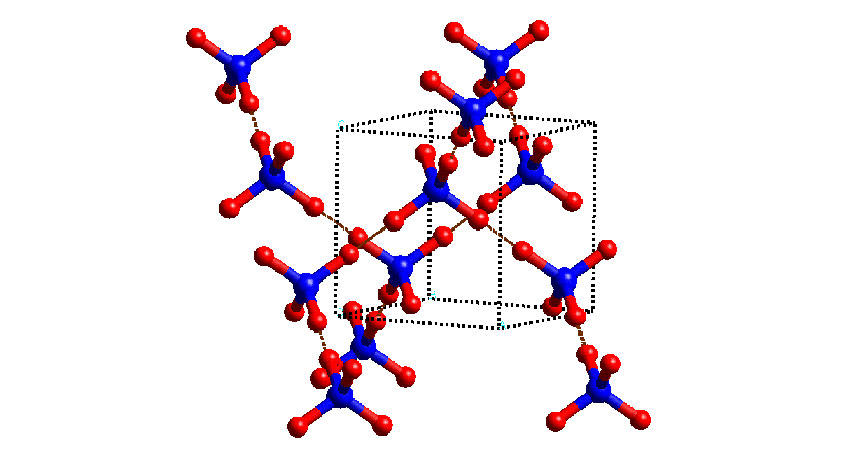Diamonds reveal sign of the deepest water known inside Earth

Deep within the hot interior of the planet, ice lurks. Now, a form of super-compact ice, found embedded in diamonds, offers the first direct clue that there is abundant water more than 610 kilometers deep in the mantle.
This ice, identified by its crystal structure and called ice-VII, doesn’t exist at Earth’s surface. It forms only at pressures greater than about 24 gigapascals — corresponding to depths between 610 and 800 kilometers, researchers report March 8 in Science. Its presence in diamonds suggests that there is water-rich fluid in the transition zone between the upper and lower mantle, and even into the top of the lower mantle.
“This is really the first time that we see water at such depths,” says Oded Navon, a mantle petrologist at the Hebrew University of Jerusalem who was not involved in the new study.
When slabs of Earth’s crust sink into the mantle layer below, they drag ocean water with them. How deep the slabs sink has been a long-standing question. Researchers have suspected that abundant aqueous fluid exists in the deep mantle, ferried there by slabs bearing water-rich minerals that shed their water when they reach the transition zone (SN: 7/12/14, p. 9). But scientists have not previously found direct evidence of that water.
That’s where diamonds come in. Diamonds form at high temperatures and pressures, crystallizing in pockets rich in the mineral carbonate before being carried to the surface with erupting magma (SN: 4/30/16, p. 8). As the diamond crystals form, they can enclose tiny amounts of fluid or rock from their surroundings. These impurities represent tiny capsules of mantle. Diamond inclusions are the only direct window scientists have into the fabric of Earth more than a kilometer beneath the surface.
Oliver Tschauner, a mineralogist at the University of Nevada, Las Vegas, and his colleagues set out to study diamond inclusions — but they weren’t looking for ice. They were hunting for signs of a molecular form of carbon dioxide that might help reveal clues to the cycling of carbon from slabs into the mantle. The researchers used an array of techniques, including X-ray diffraction, infrared spectroscopy and X-ray fluorescence, to try to identify the composition of the inclusions within three diamonds, one from China and two from southern Africa.
Instead of carbon dioxide, the team saw a telltale pattern in how some of the X-rays scattered as they passed through the diamond. That pattern pointed to ice-VII. The presence of that extremely high-pressure form of ice was a powerful clue to the depth at which the diamond must have formed. The diamonds also contained separate inclusions of fluids rich in certain salts, such as magnesium calcite and halite, and of carbon-rich fluids.
Water-rich fluids deep in the mantle could be important for driving the circulation that fuels the movements of tectonic plates and the eruptions of volcanoes. The presence of water can make it easier for rocks to melt, Navon says, by lowering the melting point of hot rock under pressure. And fluids can help redistribute heat within the mantle.
What’s more, some large, heat-producing radioactive elements such as potassium, thorium and uranium don’t fit easily into the rigid crystalline structures of minerals, so prefer melted rock when it’s available. “You just need a little bit of fluid, and they are moving into the melt,” Navon adds.
The study also raised another mystery. Fluid inclusions within diamonds originating at shallower depths, perhaps 150 to 200 kilometers below the surface, contain a mélange of water, salt and carbonates. But Tschauner and his colleagues found that in their deep diamonds, the inclusions are sequestered individually: ice in one inclusion, carbonates in another, salts in yet a third. “We were surprised that they were all separate rather than occurring together,” Tschauner says.
Notes Navon: “This is a new riddle for us to solve.”